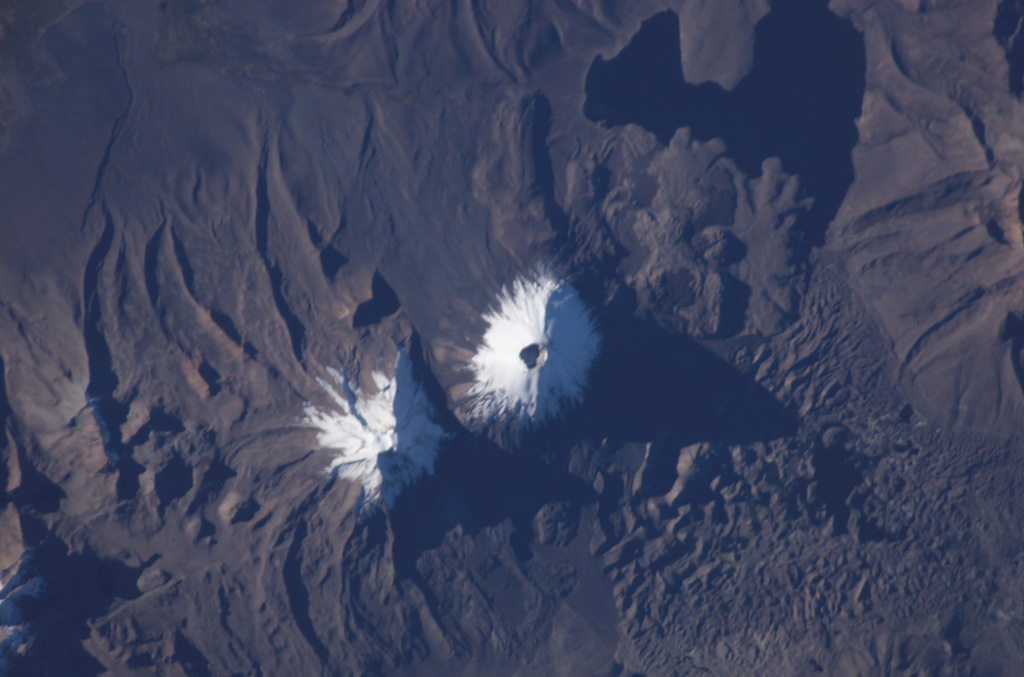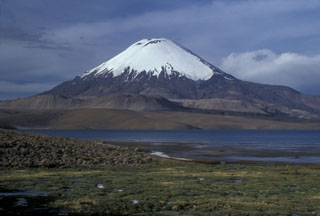Global Volcanism Program | Image GVP-11243

The two snow-capped volcanoes of the Nevados de Payachata volcanic group dominate this NASA International Space Station image (with north to the bottom). A prominent summit crater tops symmetrical Parinacota volcano, constructed to the SW of its eroded Pleistocene twin, Pomerape volcano. Silicic lava flows from Parinacota form lobes extending into Laguna Chungará, which was formed when a major debris avalanche from Parinacota blocked drainages. The hummocky debris-avalanche deposit covers much of the lower right part of the image.
NASA International Space Station image ISS009-E-6837, 2004 (http://eol.jsc.nasa.gov/).
![]() This image is made available as a Public Domain Work, but proper attribution is appreciated.
This image is made available as a Public Domain Work, but proper attribution is appreciated.

Parinacota
